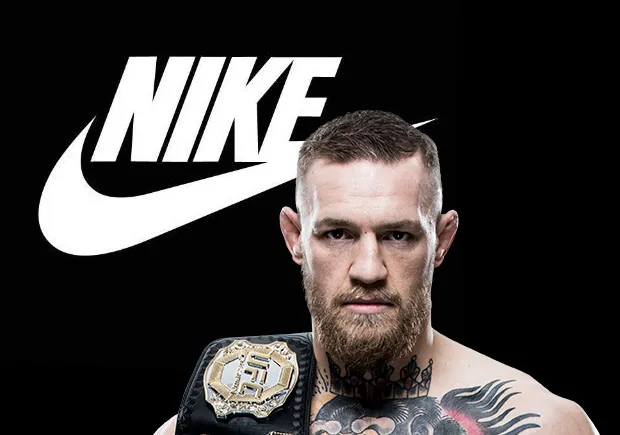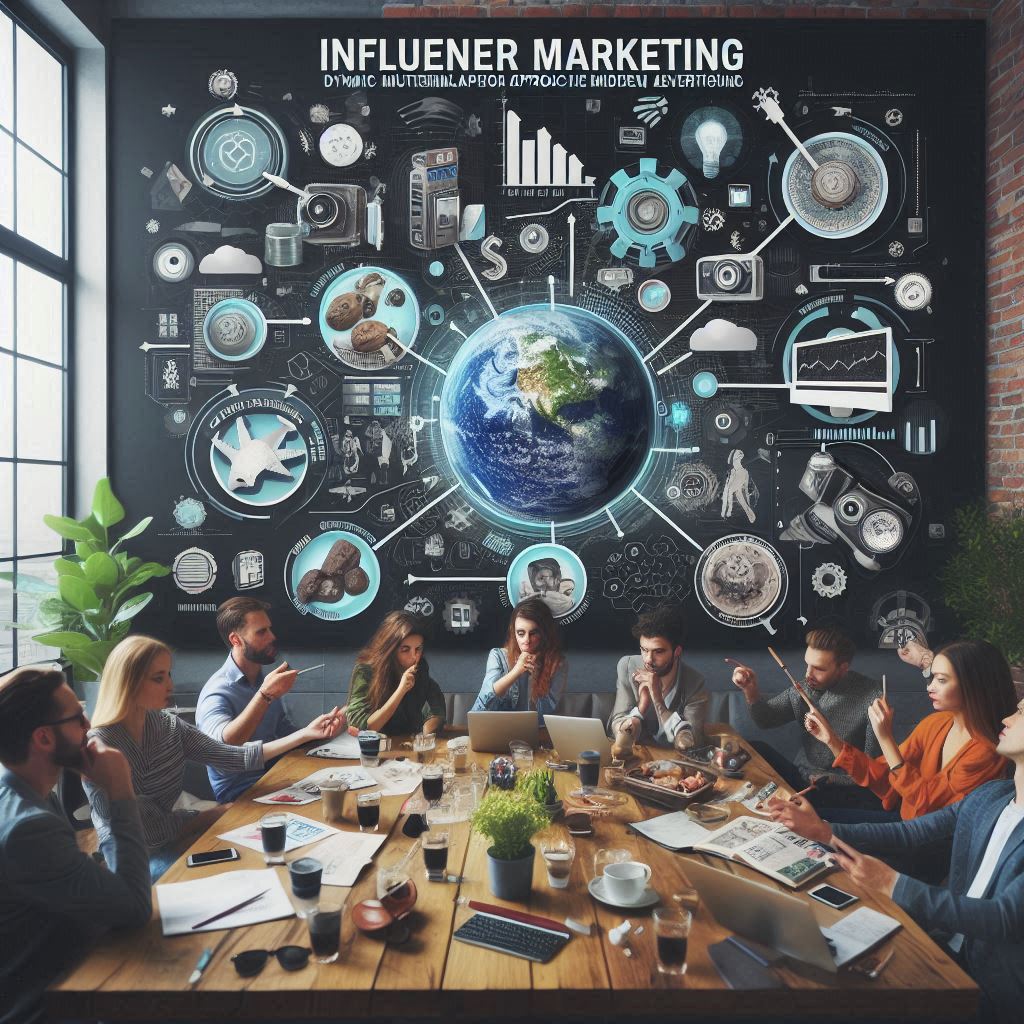In today’s fast-paced digital landscape, brands are continually searching for innovative ways to connect with their target audiences. Influencer marketing has emerged as one of the most effective strategies, offering a more authentic and engaging approach compared to traditional advertising. In this ultimate guide, we will explore the types of influencer marketing, delve into the types of influencers available, and examine various influencer categories to help you determine which strategy best fits your brand’s goals. Whether you’re a seasoned marketer or just starting out, understanding these concepts is essential to maximizing your campaign’s impact.
Throughout this article, we will discuss real-world examples, practical tips, and actionable insights into each category. You will learn how brands like Nike, Glossier, and Red Bull have harnessed the power of influencer marketing to reach new heights. By the end of this guide, you will have a comprehensive understanding of the different types of influencer marketing and be better equipped to choose the right types of influencers for your next campaign.
What Is Influencer Marketing?
Influencer marketing is a strategy that leverages individuals with a dedicated social following to promote products or services. It works by partnering with influencers who have built trust and credibility with their audiences, which can lead to higher engagement, increased brand awareness, and improved conversion rates. This marketing tactic is not limited to any one platform; from Instagram and TikTok to YouTube and blogs, influencer marketing spans across multiple digital channels. look into our blog about social media marketing tips
At its core, influencer marketing is about authenticity. Unlike traditional advertising that often feels impersonal, influencer campaigns can make consumers feel like they’re receiving a recommendation from a trusted friend. This personal touch is why many brands now prioritize influencer collaborations over standard ads. By understanding the types of influencer marketing and the influencer categories available, businesses can create campaigns that resonate deeply with their target demographics.
Moreover, this approach allows brands to tap into niche markets. For instance, a company selling eco-friendly products might partner with influencers who specialize in sustainable living. These partnerships not only drive engagement but also foster a community around shared values. The beauty of influencer marketing lies in its flexibility, enabling brands to customize campaigns to suit various objectives, whether that’s brand awareness, lead generation, or direct sales.
Why Understanding the Types of Influencer Marketing Is Crucial
The digital marketing landscape is more crowded than ever, which means that standing out requires both creativity and precision. Understanding the types of influencer marketing available enables brands to craft strategies that are not only engaging but also cost-effective. Here are a few reasons why mastering this knowledge is essential:
1. Tailored Campaign Strategies
Different influencer categories cater to different goals. Whether your objective is to build brand awareness, drive traffic, or increase conversions, knowing the types of influencers and influencer categories helps in designing a campaign that targets the right audience. For example, mega influencers might be ideal for broad reach, while nano influencers offer niche engagement.
2. Maximizing ROI
Every marketing dollar counts. By selecting the appropriate types of influencer marketing, brands can ensure that their investments yield measurable results. For instance, brands that partner with micro and nano influencers often see higher engagement rates per dollar spent compared to those who work solely with mega influencers.
3. Building Authentic Connections
Consumers today crave authenticity. Influencers who align with a brand’s values can create genuine connections with their audiences. This trust translates into higher conversion rates and a loyal customer base. By understanding the various influencer categories, marketers can select partners whose voices naturally complement the brand’s messaging.
4. Adapting to Market Trends
The influencer marketing sphere is continuously evolving. New platforms emerge, and consumer behavior shifts. Staying informed about the latest types of influencer marketing and types of influencers allows brands to remain agile, adapting their strategies to current trends and technological advancements.
Breaking Down the Types of Influencer Marketing: Influencer Categories
Now that we understand the importance of influencer marketing, let’s dive into the types of influencer marketing by breaking them down into various influencer categories. Each category offers unique advantages and can be tailored to meet specific marketing objectives.
1. Mega Influencers
Mega influencers are celebrities and well-known public figures with follower counts typically exceeding 1 million. These influencers command massive audiences and are often the first choice for brands aiming to reach a broad, mainstream market.
Real-World Example:
Consider how Nike partnered with global icons like LeBron James to launch their latest sneaker line. The campaign generated widespread buzz and instantly reached millions of potential customers worldwide. This is a classic example of leveraging the types of influencer marketing that focus on brand awareness and mass appeal.
Benefits:
- Wide Reach: Ideal for campaigns that require exposure to a large audience.
- High Credibility: Celebrity endorsements can significantly boost a brand’s image.
- Immediate Impact: Mega influencers often create an immediate surge in interest and sales.
Considerations:
- High Costs: Collaborations with mega influencers can be expensive.
- Lower Engagement Rates: Despite large followings, engagement may be lower due to the sheer volume of followers.
- Less Niche Targeting: The broad audience might not align perfectly with niche market segments.
2. Macro Influencers
Macro influencers typically have follower counts ranging from 100,000 to 1 million. These influencers strike a balance between reach and engagement, making them a popular choice for brands targeting specific demographics while still enjoying broad appeal.
Real-World Example:
A fashion brand like Zara might collaborate with macro influencers who regularly post about style and trends on platforms like Instagram. These influencers offer a mix of high-quality content and consistent engagement, helping the brand reach a fashion-savvy audience without the astronomical cost of a mega influencer.
Benefits:
- Balanced Reach and Engagement: They offer significant reach while maintaining relatively high engagement rates.
- Cost-Effective: Generally more affordable than mega influencers.
- Niche Flexibility: They often cater to specific niches, making them suitable for targeted campaigns.
Considerations:
- Brand Alignment: It’s important to ensure that the influencer’s audience aligns with the brand’s target market.
- Content Quality: The level of professionalism may vary, so brands should vet potential partners carefully.
3. Micro Influencers
Micro influencers are the rising stars of the digital world, typically boasting between 10,000 and 100,000 followers. They tend to operate within specific niches and have highly engaged, loyal audiences. When discussing types of influencer marketing, micro influencers represent a powerful tool for brands looking to drive genuine engagement.
Real-World Example:
Consider the beauty brand Glossier, which has effectively used micro influencers to create authentic buzz around new product launches. By partnering with beauty bloggers and skincare enthusiasts, Glossier generated a series of in-depth reviews and tutorials that resonated with their target audience.
Benefits:
- High Engagement Rates: Their smaller follower base often translates to more meaningful interactions.
- Cost-Effective: They offer a high return on investment, making them an attractive option for small to medium-sized businesses.
- Authenticity: Their niche focus allows for more genuine connections with their audience.
Considerations:
- Limited Reach: While engagement is high, the overall reach is smaller.
- Scalability: Running multiple micro-influencer campaigns may be necessary to achieve significant impact, which can be challenging to coordinate.
4. Nano Influencers
At the grassroots level, nano influencers typically have between 1,000 and 10,000 followers. Despite their modest numbers, these influencers excel in authenticity and local engagement, making them ideal for hyper-local campaigns and community-based marketing efforts.
Real-World Example:
Local businesses or regional brands often benefit from nano influencers. For example, a local café might partner with community figures who share their daily routines and recommendations. This strategy builds strong, localized trust and drives foot traffic to the business.
Benefits:
- Ultra-Targeted Reach: Perfect for local businesses and niche markets.
- Authentic Engagement: Their followers tend to be highly loyal and responsive.
- Budget-Friendly: Collaborations with nano influencers are generally more affordable.
Considerations:
- Limited Reach: The overall audience is small, which may limit broader campaign impact.
- Time-Intensive: Engaging with multiple nano influencers to scale a campaign can be time-consuming.
5. Affiliate Marketing with Influencers
Affiliate marketing is a performance-based strategy where influencers earn commissions for each sale made through their referral links. This model is highly attractive for brands seeking a low-risk, high-reward approach.
Real-World Example:
Consider Amazon’s affiliate program, which partners with a wide range of influencers who promote various products. These influencers earn a commission on every sale generated, aligning their incentives with the brand’s success. This approach is a prime example of blending types of influencer marketing with a performance-based model.
Benefits:
- Performance-Based: Payment is directly tied to sales, reducing financial risk.
- Scalability: Easily scalable across different niches and product categories.
- Measurable ROI: The success of the campaign is easily tracked through affiliate links.
Considerations:
- Dependence on Conversion: Success hinges on the influencer’s ability to convert their audience into buyers.
- Brand Control: Maintaining consistent brand messaging can be challenging when multiple affiliates are involved.
6. Sponsored Content and Product Reviews
Sponsored content involves paying influencers to create posts that feature your brand’s products or services. This can range from in-depth product reviews to simple shoutouts on social media. It’s one of the most popular types of influencer marketing due to its versatility and ease of execution.
Real-World Example:
Tech companies often utilize sponsored content to launch new gadgets. For instance, when a smartphone brand partners with YouTube influencers for in-depth reviews and unboxing videos, the audience receives an honest evaluation, which can drive significant interest and sales. This approach blends authentic content with promotional messaging, making it highly effective.
Benefits:
- Creative Flexibility: Influencers can craft content that aligns with their style while showcasing your brand.
- Trust Factor: Honest reviews and tutorials build credibility and trust.
- Wide Reach: Especially effective on visually-driven platforms like Instagram and YouTube.
Considerations:
- Content Control: Brands need to balance creative freedom with consistent messaging.
- Disclosure Requirements: Sponsored posts must adhere to advertising guidelines, ensuring transparency with the audience.
7. Social Media Takeovers
A social media takeover involves an influencer temporarily managing a brand’s social media account, offering a fresh perspective and engaging content for a specific period. This type of campaign is a dynamic way to attract new audiences and inject energy into a brand’s online presence.
Real-World Example:
Consider Red Bull, which has frequently allowed extreme sports athletes and influencers to take over their social media accounts during major events. This strategy not only drives engagement but also showcases the brand’s adventurous spirit and commitment to dynamic storytelling.
Benefits:
- Fresh Content: Provides a new voice and perspective on the brand’s social channels.
- Increased Engagement: Can drive spikes in interaction during the takeover period.
- Audience Expansion: Attracts the influencer’s followers to the brand’s social media.
Considerations:
- Logistical Challenges: Requires careful planning and coordination to ensure seamless integration.
- Content Consistency: The influencer’s style must align with the brand’s overall image.
8. Contests and Giveaways
Contests and giveaways are interactive ways to boost engagement and build excitement around your brand. By partnering with influencers to host these events, brands can quickly generate buzz and expand their reach.
Real-World Example:
A popular example is how beauty brands often collaborate with influencers for makeup giveaways. When Sephora teams up with beauty vloggers to host a giveaway, followers are encouraged to participate by tagging friends, sharing posts, or using specific hashtags. This approach not only drives engagement but also helps spread brand awareness organically.
Benefits:
- High Engagement: Interactive campaigns naturally generate more user participation.
- Increased Reach: Participants often share the contest with their networks, extending the campaign’s reach.
- Community Building: Fosters a sense of community and excitement around the brand.
Considerations:
- Compliance and Legalities: Ensure that contest rules comply with legal guidelines.
- Follow-Up Strategy: Plan for how to convert contest participants into long-term followers or customers.
9. Brand Ambassador Programs
A brand ambassador program involves forming long-term relationships with influencers who consistently represent and promote your brand. This sustained partnership is one of the most authentic types of influencer marketing because it turns influencers into true advocates.
Real-World Example:
Lululemon has successfully employed brand ambassador programs by partnering with fitness enthusiasts and yoga instructors. These ambassadors regularly incorporate the brand’s apparel into their daily routines, offering genuine endorsements that resonate with their followers. This long-term relationship fosters deep trust and loyalty among consumers.
Benefits:
- Long-Term Relationships: Consistent messaging over time strengthens brand identity.
- Authenticity: Ambassadors are seen as genuine fans of the brand.
- Deep Engagement: Continuous promotion helps maintain high engagement levels.
Considerations:
- Commitment: Long-term partnerships require ongoing collaboration and mutual commitment.
- Consistency: It’s important that the influencer’s evolving style remains in sync with the brand’s values.
10. Event and Experience Activations
Event and experience marketing leverages live or virtual events to create immersive brand experiences. Influencers are invited to these events to share their firsthand experiences, providing a real-world context for the brand’s products or services.
Real-World Example:
For instance, a travel brand like Airbnb might invite lifestyle influencers to exclusive property tours or destination events. These influencers then share their experiences through live streams, stories, and posts, effectively showcasing the brand’s offerings in a captivating and authentic way.
Benefits:
- Immersive Storytelling: Allows brands to convey their message through real-life experiences.
- High Engagement: Live events often generate significant social media buzz.
- Enhanced Brand Perception: Creates memorable experiences that foster strong emotional connections.
Considerations:
- High Costs: Organizing events can be expensive and require meticulous planning.
- Logistical Complexity: Coordination between the brand, event organizers, and influencers is crucial for success.
11. Cause & Advocacy Marketing
In an era where consumers increasingly prioritize social responsibility, cause and advocacy marketing has become a powerful influencer category. This type of campaign involves partnering with influencers who are passionate about social causes, environmental issues, or community initiatives. By aligning with these influencers, brands can demonstrate their commitment to making a positive impact.
Real-World Example:
A sustainable fashion brand might work with eco-conscious influencers to highlight their environmentally friendly practices and products. For example, Patagonia is known for its commitment to environmental activism and often collaborates with influencers who share these values, thereby reinforcing its brand ethos and engaging a socially responsible audience.
Benefits:
- Authentic Storytelling: Influencers passionate about a cause can communicate the brand’s message more convincingly.
- Stronger Emotional Connection: Consumers are more likely to support brands that stand for something meaningful.
- Positive Brand Image: Aligning with a cause can enhance the brand’s reputation and credibility.
Considerations:
- Authenticity is Key: The partnership must be genuine; any perceived insincerity can backfire.
- Niche Audience: While powerful, these campaigns may appeal primarily to a socially conscious audience.
Real-World Success Stories in Influencer Marketing

To bring the discussion full circle, let’s highlight a few comprehensive examples that illustrate the effective use of various types of influencer marketing and influencer categories:
1. Glossier’s Micro-Influencer Strategy
Glossier has built its brand by harnessing the power of micro influencers. By partnering with beauty enthusiasts who share their personal skincare routines and honest reviews, Glossier has cultivated a dedicated community that trusts their recommendations. This approach has not only driven significant engagement but also positioned the brand as an authentic leader in the beauty industry.
2. Nike’s Celebrity Endorsements
Nike has long been a pioneer in leveraging mega and macro influencers for massive brand awareness. Collaborations with high-profile athletes such as LeBron James and Cristiano Ronaldo have helped Nike achieve widespread recognition and instant credibility across global markets. This classic example underscores the impact of utilizing well-known personalities in your influencer marketing strategy.
3. Airbnb’s Event Activations
Airbnb’s approach to event and experience activations illustrates how immersive experiences can drive engagement. By inviting influencers to explore unique properties and share their experiences, Airbnb has successfully showcased its diverse offerings and inspired travel enthusiasts worldwide. This campaign combined the benefits of live storytelling with the authenticity of influencer-generated content.
Tips for Choosing the Right Types of Influencer Marketing for Your Brand
Selecting the most appropriate types of influencer marketing for your brand requires careful consideration of several factors:
Define Your Objectives
Before diving into campaign planning, clarify your goals. Are you looking to increase brand awareness, drive conversions, or build a loyal community? Different influencer categories excel at different objectives. For example, if your primary aim is to generate buzz quickly, a collaboration with a mega influencer might be ideal. Conversely, for building long-term customer relationships, a brand ambassador program might offer the best results.
Know Your Audience
Understanding the demographics and interests of your target audience is crucial. Analyze where your potential customers spend their time online and identify the types of influencers who resonate with that audience. This ensures that your campaign is both relevant and engaging.
Budget Considerations
Budget plays a significant role in choosing the right influencer marketing strategy. While mega influencers can offer enormous reach, they often come with hefty price tags. Micro and nano influencers, on the other hand, offer a more cost-effective solution with high engagement rates. Balancing your budget with your campaign objectives will help determine the optimal mix of influencer categories.
Evaluate Engagement Rates
When assessing potential influencer partners, don’t just focus on follower counts. Evaluate their engagement rates, audience demographics, and the authenticity of their interactions. High engagement rates are a strong indicator that the influencer’s audience is actively interested in their content, which can lead to better campaign outcomes.
Test and Measure
Influencer marketing is an evolving field. Start with smaller campaigns to test different types of influencer marketing strategies and measure their performance. Use analytics to track key performance indicators (KPIs) such as engagement, reach, and conversions. This data-driven approach will help refine your strategy over time.
The Future of Influencer Marketing
As technology evolves and consumer preferences shift, so too will the types of influencer marketing. Emerging platforms, advanced analytics, and innovative content formats like augmented reality (AR) and live streaming are set to further transform how brands interact with audiences. Staying informed about these trends and continuously exploring new influencer categories will be critical for maintaining a competitive edge.
Moreover, authenticity and transparency will remain at the heart of influencer marketing. Consumers are becoming increasingly savvy about sponsored content, which means that genuine partnerships and honest endorsements will be more important than ever. Brands that prioritize building real relationships with the types of influencers that best reflect their values will be well-positioned for long-term success.
Conclusion

Influencer marketing offers a dynamic and multifaceted approach to modern advertising. By understanding the various types of influencer marketing, familiarizing yourself with the different types of influencers, and leveraging the appropriate influencer categories, you can create campaigns that not only capture attention but also drive meaningful results. From mega influencers who command mass appeal to nano influencers who provide hyper-targeted authenticity, the right strategy depends on your brand’s unique goals and target audience.
In this comprehensive guide, we explored everything from the basics of influencer marketing to real-world examples and actionable tips for selecting the ideal influencers for your campaigns. Whether you’re aiming for broad reach, deep engagement, or both, the insights shared here are designed to help you navigate the ever-evolving world of influencer marketing with confidence.
As the digital landscape continues to change, remember that the key to successful influencer marketing lies in building genuine connections. Embrace creativity, stay agile, and always put authenticity at the forefront of your campaigns. With the right strategy in place, you can harness the power of influencer marketing to drive growth, enhance brand credibility, and achieve lasting success in today’s competitive market.
By understanding and implementing the diverse types of influencer marketing and exploring various influencer categories, your brand can unlock a powerful tool for reaching audiences in innovative and meaningful ways. Whether you choose to work with mega, macro, micro, or nano influencers—or even explore affiliate and event-based strategies—the future of influencer marketing is bright and full of opportunity.
Take the next step in elevating your marketing strategy by considering which types of influencers best align with your brand values and campaign objectives. The insights and examples provided in this guide should serve as a roadmap for your journey into the dynamic world of influencer marketing. Happy collaborating, and here’s to your next successful campaign!
By focusing on the right types of influencer marketing, understanding the diverse types of influencers available, and leveraging the perfect influencer categories for your brand, you’re well on your way to creating impactful campaigns that resonate with your target audience and drive real business results.
If you found this guide helpful, feel free to share your thoughts or experiences with influencer marketing in the comments below. Stay tuned for more insights, tips, and success stories from the ever-evolving world of digital marketing.




Leave a Comment